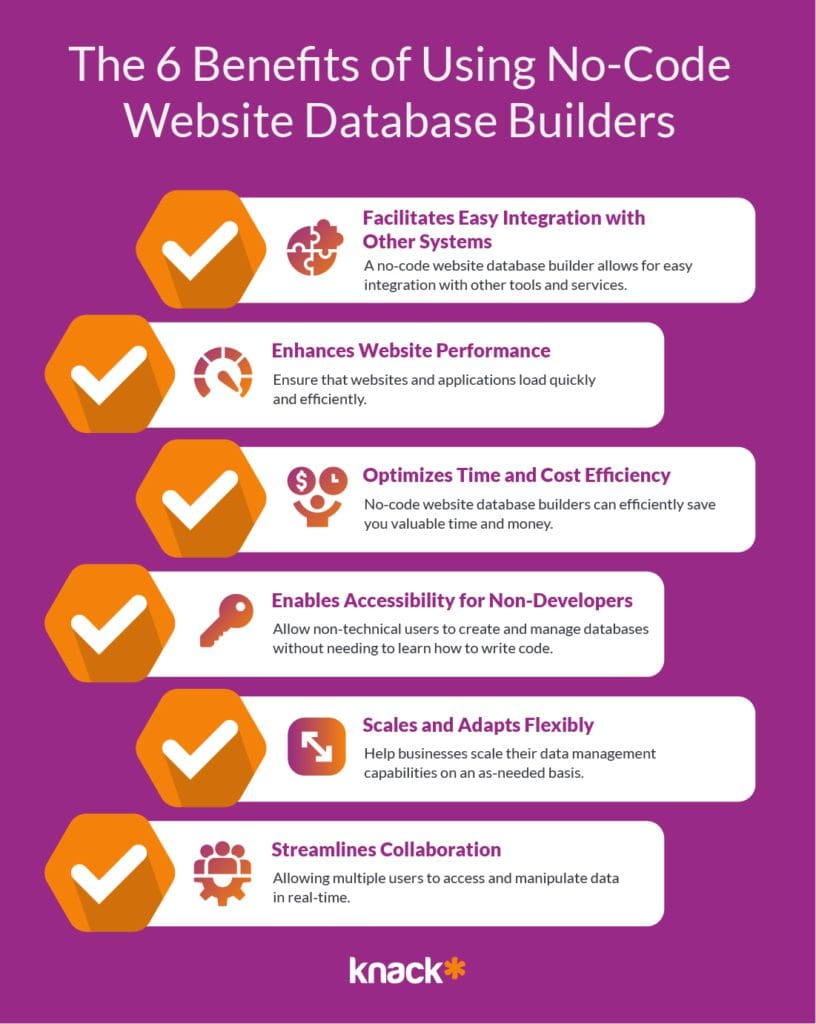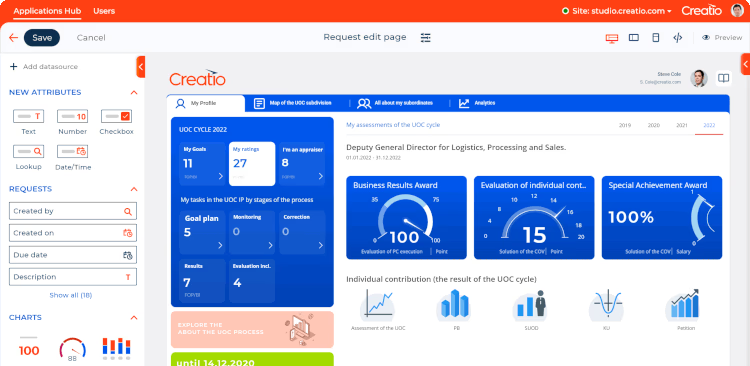How No-Code Tools Simplify Open Platform Database Production for Everybody
How No-Code Tools Simplify Open Platform Database Production for Everybody
Blog Article
A Comprehensive Overview to Implementing Scalable Databases Without the Need for Coding Knowledge
In the contemporary landscape of data administration, the capability to implement scalable databases without coding proficiency is ending up being increasingly essential for companies of all dimensions. This guide aims to illuminate the process, concentrating on user-friendly devices and instinctive interfaces that debunk database configuration. By analyzing crucial functions, effective techniques for execution, and best practices for ongoing administration, we will certainly attend to exactly how even non-technical individuals can confidently browse this complicated terrain. What are the important components that can genuinely empower these customers to leverage scalable data sources successfully? The responses might redefine your method to data management.
Recognizing Scalable Databases
In the world of contemporary data management, scalable databases have actually arised as a vital remedy for companies seeking to manage raising volumes of information efficiently. These data sources are created to fit growth by allowing for the seamless enhancement of sources, whether via straight scaling (adding more devices) or vertical scaling (upgrading existing machines) This versatility is necessary in today's busy electronic landscape, where data is generated at an extraordinary rate.
Scalable databases normally utilize distributed designs, which make it possible for information to be spread out across numerous nodes. This circulation not just improves performance yet also provides redundancy, guaranteeing data accessibility also in the event of equipment failures. Scalability can be a critical variable for numerous applications, consisting of shopping platforms, social media sites networks, and huge information analytics, where user need can fluctuate considerably.
In addition, scalable data sources typically include robust data consistency models that stabilize performance and dependability. Organizations must consider their certain requirements, such as read and write speeds, information integrity, and fault resistance when picking a scalable data source service. Eventually, understanding the underlying principles of scalable databases is essential for companies intending to thrive in an increasingly data-driven globe.
Trick Features to Seek
When evaluating scalable data sources, a number of crucial features are critical to ensuring optimal efficiency and reliability. Primarily, think about the style of the database. A distributed design can boost scalability by allowing information to be kept across numerous nodes, facilitating smooth information gain access to and processing as need rises.
One more essential function is data dividing, which allows effective monitoring of big datasets by dividing them into smaller sized, more workable pieces (no-code). This strategy not just boosts efficiency however also streamlines resource allotment
In addition, seek robust replication capacities. This attribute ensures information redundancy and high availability, lessening downtime throughout upkeep or unanticipated failures.
Performance surveillance tools are likewise vital, as they provide real-time understandings right into system wellness and functional effectiveness, enabling prompt adjustments to keep optimal efficiency.

User-Friendly Database Equipment
Simplicity is a crucial element in the style of easy to use database devices, as it boosts accessibility for customers with varying degrees of technical competence. no-code. These devices prioritize instinctive user interfaces, making it possible for customers to produce, take care of, and inquiry data sources without requiring considerable programs knowledge
Trick functions generally include additional resources drag-and-drop performance, visual data modeling, and pre-built design templates that improve the setup procedure. Such tools often supply assisted tutorials or onboarding processes that help with individual engagement and reduce the understanding curve. In addition, seamless combination with popular data resources and solutions guarantees that users can quickly import and export information, even more streamlining procedures.

Additionally, robust support and neighborhood resources, such as forums and documentation, boost the individual experience by supplying support when needed. In general, user-friendly data source tools equip organizations to harness the power of scalable data sources, making information administration available to every person entailed.
Step-by-Step Implementation Overview
Exactly how can organizations efficiently implement scalable databases to meet their growing data requirements? The process starts with recognizing certain information requirements, consisting of the volume, variety, and velocity of data that will certainly be refined. Next, organizations must review user-friendly data source devices that offer scalability attributes, such as cloud-based options or handled data source solutions.
Once the best device is selected, the next step involves setting up the data source environment. This consists of establishing circumstances, defining individual consents, and establishing information frameworks that line up with company objectives. Organizations needs to then migrate existing data right into the new system, ensuring data honesty and very little interruption to procedures.
Post-migration, performing detailed screening is important; this consists of efficiency testing under various lots conditions to make certain the system can manage future growth - no-code. Additionally, it is necessary to train staff on the database management user interface to promote smooth usage
Best Practices for Monitoring
Reliable administration of scalable databases needs a calculated strategy that focuses on ongoing tracking and optimization. To achieve this, companies need to implement robust surveillance tools that give real-time insights right into database efficiency metrics, such as question feedback times, source application, and deal throughput. Frequently analyzing these metrics can help recognize bottlenecks and areas for enhancement.

Regular backups and calamity healing plans are necessary to protect data stability and schedule. Establishing a routine for checking these back-ups will certainly make certain a reliable recovery process in situation Discover More of an unexpected failing.
Moreover, performance tuning ought to be a constant procedure. Changing indexing approaches, enhancing questions, and scaling resourcesâEUR" whether up and down or horizontallyâEUR" will certainly help maintain optimal efficiency as usage needs advance.
Last but not least, cultivating a society of expertise sharing amongst team participants will certainly enable continuous learning and adjustment, making certain that the administration of scalable databases stays effective and efficient with time.
Verdict
Finally, the implementation of scalable databases can be successfully attained without coding knowledge with the use of user-friendly user interfaces and easy to use devices. By adhering to the laid out methods for configuration, information movement, and performance screening, individuals can browse the intricacies of database administration easily. Emphasizing finest practices for ongoing upkeep and cooperation more enhances the capability to manage scalable databases efficiently in a swiftly evolving data-driven atmosphere.
In the contemporary landscape of information administration, the capability to implement scalable databases without coding knowledge is coming to be significantly necessary for companies of all dimensions.In the realm of modern data monitoring, scalable databases have actually arised as an important option for companies seeking to manage raising volumes of information effectively.Additionally, scalable data sources frequently feature robust data uniformity designs that balance performance and reliability.How can organizations effectively carry out scalable databases to fulfill their growing data demands? Next off, organizations need to review user-friendly data source tools that provide scalability functions, such as cloud-based options or handled database services.
Report this page